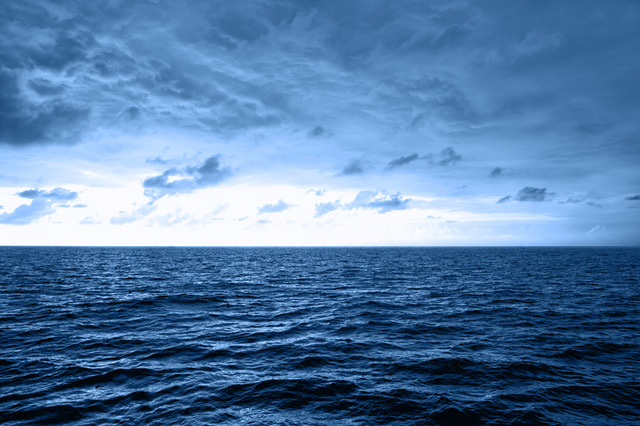-
 No.1 Scheffler holds off Griffin to defend PGA Memorial title
No.1 Scheffler holds off Griffin to defend PGA Memorial title
-
As toll rises, Nigeria flood victims recall worst disaster in memory

-
 Jubilant PSG party into night with Champions League trophy
Jubilant PSG party into night with Champions League trophy
-
Jefferson-Wooden scorches to 100m win at Grand Slam Track meet

-
 Who said what: French Open day 8
Who said what: French Open day 8
-
Hundred hero Root 'still got a lot to give'

-
 Iyer powers Punjab past Mumbai and into IPL final against Bengaluru
Iyer powers Punjab past Mumbai and into IPL final against Bengaluru
-
Majestic Root's ODI best seals England's series win over the West Indies

-
 Haris hits maiden hundred as Pakistan whitewash Bangladesh
Haris hits maiden hundred as Pakistan whitewash Bangladesh
-
Simon Yates overcomes doubts to secure his first Giro d'Italia triumph

-
 Polish presidential election rivals neck and neck
Polish presidential election rivals neck and neck
-
Pyramids survive tense finish to be crowned African champions

-
 Kirkwood holds off Ferrucci to grab second IndyCar win of 2025
Kirkwood holds off Ferrucci to grab second IndyCar win of 2025
-
Majestic Root's ODI best takes England to series win over the West Indies

-
 Mexicans elect their judges under shadow of crime, corruption
Mexicans elect their judges under shadow of crime, corruption
-
Macron condemns 'unacceptable' violence during football celebrations

-
 Alcaraz, Swiatek pass tough French Open tests
Alcaraz, Swiatek pass tough French Open tests
-
Root century takes England to ODI series win over the West Indies

-
 Alcaraz grinds past Shelton to reach Roland Garros last eight
Alcaraz grinds past Shelton to reach Roland Garros last eight
-
British FM says Morocco's autonomy plan for W. Sahara 'most credible' solution

-
 Simon Yates secures his first Giro d'Italia triumph
Simon Yates secures his first Giro d'Italia triumph
-
How social media can 'trigger' eating disorders in young people

-
 Jubilant PSG parade Champions League trophy in Paris
Jubilant PSG parade Champions League trophy in Paris
-
Reserved, resilient Simon Yates casts off Giro demons to crown career

-
 Liverpool keeper Kelleher set to join Brentford: reports
Liverpool keeper Kelleher set to join Brentford: reports
-
Verstappen punished after ramming into Russell

-
 Disney's 'Lilo & Stitch' wins N.America box office for second week
Disney's 'Lilo & Stitch' wins N.America box office for second week
-
Olympic champion Zheng battles into French Open last eight

-
 Dembele, Doue among seven PSG players on Champions League team of the season
Dembele, Doue among seven PSG players on Champions League team of the season
-
Sabalenka powers into Roland Garros quarter-finals

-
 'Proud' Piastri extends championship lead with Spanish GP victory
'Proud' Piastri extends championship lead with Spanish GP victory
-
US says trade row with China could ease after Trump-Xi talks

-
 Piastri extends championship lead with Spanish Grand Prix victory
Piastri extends championship lead with Spanish Grand Prix victory
-
Swiatek passes Rybakina test at French Open, Alcaraz eyes quarters

-
 McLaren's Piastri wins Spanish Grand Prix
McLaren's Piastri wins Spanish Grand Prix
-
US, China trade row could ease after Trump-Xi talks: Treasury chief

-
 Camille Pissarro picture perfect for O'Brien in French Derby
Camille Pissarro picture perfect for O'Brien in French Derby
-
Key climate target of airline decarbonisation 'in peril': IATA

-
 Swiatek survives scare to reach French Open quarter-finals
Swiatek survives scare to reach French Open quarter-finals
-
European champions PSG land back in Paris ahead of victory parade

-
 Ton-up Carty takes West Indies to 308 all out against England
Ton-up Carty takes West Indies to 308 all out against England
-
Ukraine strikes Russian bombers ahead of Istanbul talks

-
 Man Utd sign Brazil forward Cunha from Wolves
Man Utd sign Brazil forward Cunha from Wolves
-
Gaza rescuers say Israeli fire kills 31 near aid site

-
 Gaming fans bring electric energy to Rotterdam as TwitchCon arrives
Gaming fans bring electric energy to Rotterdam as TwitchCon arrives
-
Indian airline IndiGo orders 30 Airbus A350 widebody planes

-
 More than 1,100 migrants crossed Channel on Saturday: UK govt data
More than 1,100 migrants crossed Channel on Saturday: UK govt data
-
New world no. 1 Kunlavut seals Singapore crown in style

-
 Svitolina stuns Paolini to reach French Open quarter-finals
Svitolina stuns Paolini to reach French Open quarter-finals
-
Mo'unga shrugs off broken hand to win Japanese title

Is Australia’s Economy Doomed?
The Australian economy, long admired for its resilience and resource-driven growth, faces mounting concerns about its future trajectory. With global economic headwinds, domestic challenges, and structural vulnerabilities coming to the fore, analysts are questioning whether the nation’s prosperity is at risk. While some warn of a potential downturn, others argue that Australia’s adaptability and strengths could steer it clear of doom. A closer look reveals a complex picture of risks and opportunities shaping the country’s economic outlook.
Australia’s economy has historically thrived on its vast natural resources, particularly iron ore, coal, and natural gas, which have fueled exports to Asia, especially China. However, global demand for these commodities is softening. China’s economic slowdown, coupled with its pivot toward green energy, has reduced reliance on Australian coal and iron ore. In 2024, iron ore prices dropped significantly, impacting export revenues. This decline has exposed Australia’s heavy dependence on a single market, raising alarms about the need for diversification. Efforts to expand trade with India and Southeast Asia are underway, but these markets cannot yet offset the loss of Chinese demand.
Domestically, inflation remains a persistent challenge. In 2024, inflation hovered around 3.5%, down from its 2022 peak but still above the Reserve Bank of Australia’s (RBA) 2-3% target. High energy costs and supply chain disruptions have kept prices elevated, squeezing household budgets. Wage growth, while improving, has not kept pace with inflation, eroding real incomes. The RBA’s response—raising interest rates to 4.35%—has cooled the housing market but increased borrowing costs for households and businesses. Mortgage stress is rising, with many Australians grappling with higher repayments amid stagnant wages.
The housing crisis is another sore point. Skyrocketing property prices in cities like Sydney and Melbourne have locked out first-time buyers, fueling inequality. Construction costs have surged due to labor shortages and expensive materials, slowing new housing supply. Government initiatives to boost affordable housing have fallen short, leaving young Australians pessimistic about homeownership. This dynamic not only strains social cohesion but also hampers economic mobility, as wealth concentrates among older, property-owning generations.
Labor market dynamics add further complexity. Unemployment remains low at around 4.1%, a near-historic achievement. However, underemployment is creeping up, and many jobs are in low-wage, insecure sectors like retail and hospitality. Skilled worker shortages in critical industries—healthcare, engineering, and technology—persist, hampering productivity. Immigration, a traditional solution, has resumed post-pandemic, but visa processing delays and global competition for talent limit its impact. Without addressing these gaps, Australia risks stalling its economic engine.
Climate change poses a long-term threat. Extreme weather events—floods, bushfires, and droughts—have become more frequent, disrupting agriculture and infrastructure. The agricultural sector, a key economic pillar, faces declining yields due to unpredictable weather. Transitioning to renewable energy is essential, but progress is uneven. While Australia leads in solar adoption, its reliance on coal for domestic power generation undermines green ambitions. The cost of transitioning to net-zero emissions by 2050 is estimated at hundreds of billions, straining public finances already stretched by aging population costs.
Public debt, while manageable at around 40% of GDP, is another concern. Pandemic-era stimulus and infrastructure spending have driven deficits, with net debt projected to reach $1 trillion by 2027. Tax revenues from mining have cushioned the blow, but their decline could force tough choices—higher taxes or spending cuts—both politically contentious. The government’s focus on renewable energy and defense spending, including the AUKUS nuclear submarine deal, adds pressure to an already tight budget.
Yet, Australia is not without strengths. Its services sector, particularly education and tourism, is rebounding post-COVID, with international students and visitors returning in droves. The tech sector, though small, is growing, with startups in fintech and biotech attracting global investment. Critical minerals like lithium and rare earths offer new export opportunities as the world electrifies. Trade agreements with the UK, EU, and Indo-Pacific nations could open new markets, reducing reliance on China. Moreover, Australia’s stable institutions and skilled workforce provide a foundation for long-term growth.
Still, structural issues loom large. Productivity growth has stagnated, lagging behind global peers. An overreliance on housing and mining for wealth creation has crowded out investment in manufacturing and innovation. The education system, once a global leader, struggles to produce graduates aligned with future needs, particularly in STEM fields. Indigenous economic exclusion remains a persistent drag, with gaps in employment and income barely narrowing.
The question of whether Australia’s economy is doomed hinges on its ability to adapt. Pessimists point to declining commodity prices, rising debt, and climate risks as harbingers of decline. Optimists highlight the nation’s track record of dodging recessions—avoiding one for over three decades until COVID—and its capacity for reform. Policy choices in the coming years will be critical. Boosting productivity, diversifying exports, and investing in skills and renewables could secure prosperity. Failure to act, however, risks a slow slide into stagnation.
For now, Australia stands at a crossroads. Doomed? Not yet. But the warning signs are clear, and complacency is not an option.

EU: Record number of births!

EU: Military spending is on the rise!

Crisis: EU bicycle production drops!

EU: Foreign-controlled enterprises?

EU DECODED: Deforestation law’s trade-offs

Underwater Wi-Fi: European startups woo investors

Cultural year 2024: between Qatar and Morocco

Planning a wellness break? Poland!

Studio Kremlin: creative co-working in Paris

Culture: Serbia’s architectural marvels

EU Residence permits: Record level to third nationals



